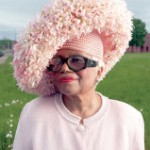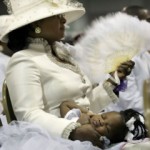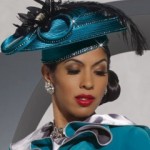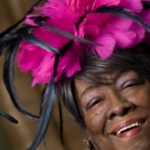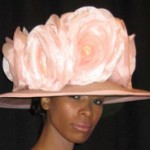By Erica Taylor, The Tom Joyner Morning Show
Special to the Times
The earliest known traditional hats in history were worn in Thebes and seen on ancient Egyptian murals. Next there were Phrygian caps that were worn by the freed slaves in Rome, signifying their independence. As the centuries went by, the traditional use of hats worn by women in church is said to originate from the Apostle Paul’s words in 1st Corinthians 11:15, which says that women should cover their heads during worship. Black women have since embraced those words with elaborate church hats.
During and after slavery, Black women who worked as maids and servants broke away from their uniforms on Sunday and wore decorated hats to service. The hat, no matter what material it was made from, was adorned with ribbons, bows and flowers. It was the Black woman’s one day of individualism. Since then, church hats have gotten bigger and bolder.
One of America’s most famous milliners, or hat maker, is remembered in a new permanent collection by the Smithsonian National Museum of African American Culture. The work of Mae Reeves, a milliner to the elite Black women of the past, will have her shop re-created in the museum. During the 1940s and ’50s, Mae Reeves supplied original hat creations to Lena Horne, Ella Fitgerald, Eartha Kitt and Marian Anderson. Reeves is now 99 years old and her granddaughter, Donna Limerick, carries on the memory of her grandmother’s legacy by putting Reeve’s hats on display.
Women such as Vanilla Beane, age 94 and another East Coast milliner, kept her shop doors open for decades, Bené Millinery on Third Street NW. One of her most famous clients was the late Dr. Dorothy Height.
Black women and church hats were celebrated in the book “Crowns” (2000) by Michael Cunningham and Craig Murberry. The book tells the stories behind Black women and their hats,
Excerpt from Crowns:
Don’t wear a hat wider than your shoulders. Don’t wear a hat that is darker than your shoes. If your hat has feathers, make sure they are never bent or broken. Sequins don’t look good in the daytime. Easter hats should be white, cream or pastel — even if it’s still cold outside. For a look that is both elaborate and demure, try a chapel veil.
In 2002, an off-Broadway production of the book was released by playwright Regina Taylor. The gospel musical celebrates the role of hats in Black southern culture.

